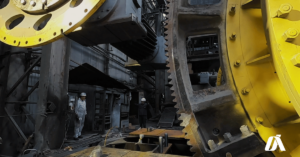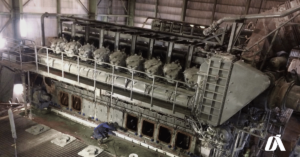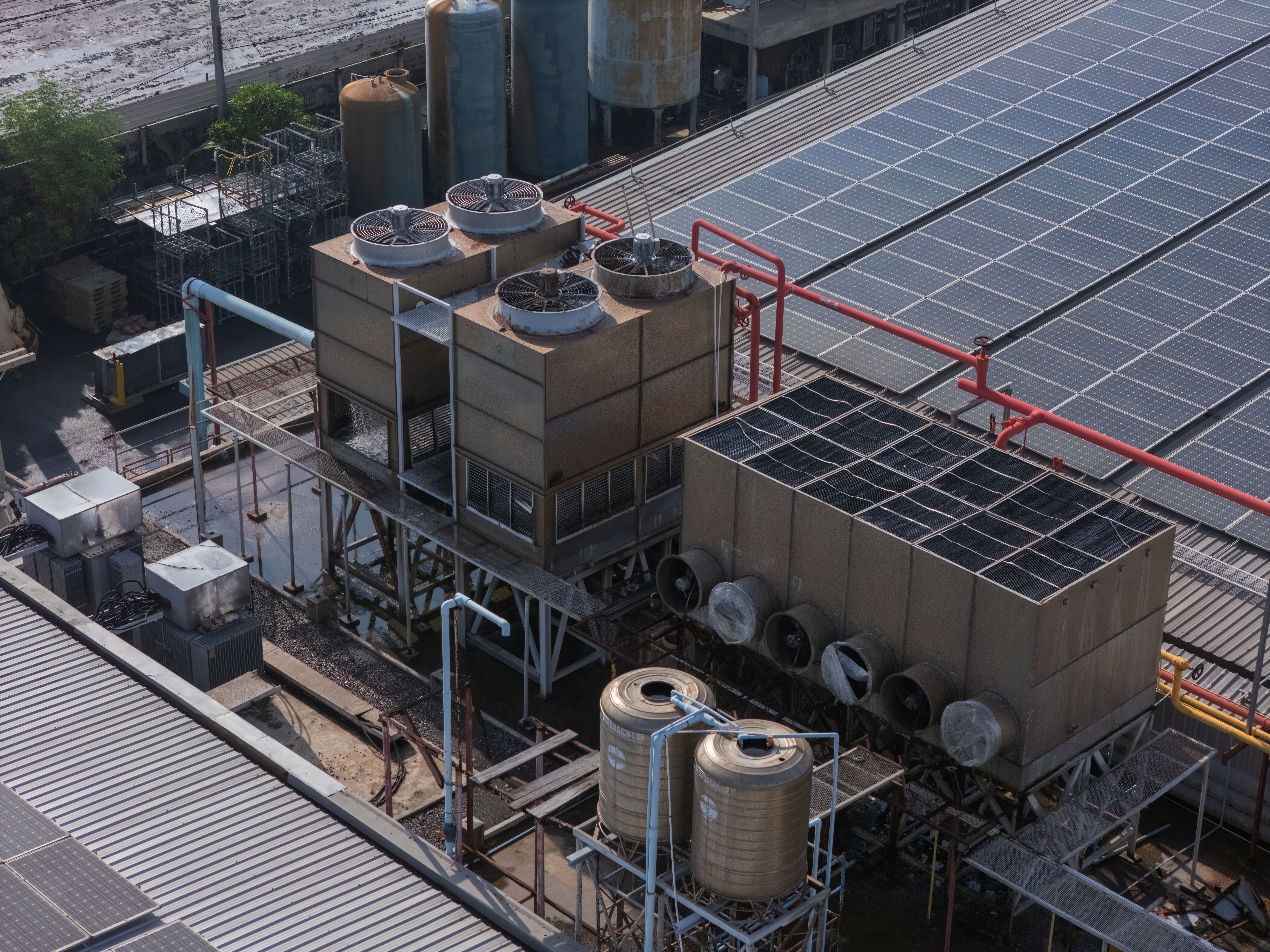In industries heavily reliant on heavy machinery, maintaining their stability and optimising efficiency are critical for successful operations. With continuous technological advancements, innovative solutions have emerged to maximise the performance of these machines.
However, despite significant progress in areas like CBM (Condition-Based Maintenance), preventive maintenance, and failure analysis in rotating equipment, there remains a substantial gap when it comes to implementing appropriate measures and finding the right solutions. This gap is particularly pronounced in addressing issues related to foundations and grouts. In this blog post, we will explore the importance of overcoming this gap and highlight potential strategies to enhance stability and efficiency in heavy machinery operations.
Importance of Stability and Efficiency in Heavy Machinery
In industries relying on heavy machinery, stability and efficiency are not just desirable but crucial for achieving optimal performance. Unstable equipment can result in a range of unwanted effects, including reduced productivity, increased maintenance costs, and safety risks.
Imagine a scenario where heavy machinery experiences excessive vibrations or oscillations during operation. Such instability can lead to decreased accuracy, higher levels of wear and tear, and potential damage to the surrounding infrastructure. Additionally, unstable machinery poses safety hazards to workers, increasing the risk of accidents or injuries.
By focusing on stability and efficiency, businesses can unlock several benefits. First and foremost, stable machinery operates more effectively, delivering consistent performance and reliable results. This translates into enhanced productivity and output, allowing businesses to meet production targets and deadlines efficiently. Moreover, stable machinery experiences fewer unexpected breakdowns and downtime, minimising disruptions to operations and maximising overall efficiency. This not only saves valuable time but also reduces the costs associated with unplanned repairs, maintenance, and lost production.
Prioritising stability and efficiency fosters a safer working environment for employees. Stable machinery reduces the likelihood of accidents caused by sudden equipment malfunctions or instability-related incidents. By minimising safety risks, businesses can protect their workforce and reduce the financial and legal consequences associated with workplace accidents.
Technological Advances in CBM and Preventive Maintenance
Over the years, significant advancements have been made in the field of Condition-Based Maintenance (CBM) and preventive maintenance, revolutionising how businesses approach equipment maintenance and failure prevention.
CBM techniques utilise state-of-the-art technologies such as vibration analysis, oil analysis, thermography, and acoustic emissions monitoring to assess the condition of machinery in real-time. By continuously monitoring critical parameters, CBM enables proactive maintenance interventions based on actual equipment health, rather than relying on arbitrary schedules or reactive responses to breakdowns.
Vibration analysis, for example, allows technicians to identify and analyse the vibrational patterns of rotating equipment. Any anomalies detected during the analysis can be indications of impending failures or malfunctions. Oil analysis, on the other hand, involves regularly analysing oil samples to assess the presence of contaminants, wear particles, or abnormal levels of additives, providing insights into the condition of critical components. Thermography utilises infrared imaging to identify variations in temperature, which can reveal abnormalities or potential hotspots indicating equipment issues.
These advanced monitoring techniques provide businesses with valuable data and insights into the health and performance of their machinery. By detecting potential failures at an early stage, companies can proactively schedule maintenance activities, plan for part replacements, and address issues before they escalate into major problems. This proactive approach not only minimises unplanned downtime but also helps optimise the life cycle of equipment, leading to significant cost savings in the long run.
Identifying the Gap
While technological advancements in CBM, preventive maintenance, and failure analysis have significantly improved the overall understanding and management of rotating equipment, a considerable gap persists when it comes to translating these advancements into practical measures and solutions. Despite the availability of sophisticated monitoring tools and analytical techniques, many businesses struggle to effectively apply them in addressing stability issues, particularly those related to foundations and grouts.
Foundations and grouts play a critical role in supporting heavy machinery and ensuring its stability during operation. However, their importance is often overlooked, and inadequate attention is given to their maintenance, installation and repairs. The gap emerges from a lack of awareness, limited expertise, or insufficient allocation of resources toward addressing foundational and grouting challenges.
Overcoming the Gap
To bridge the gap and enhance stability and efficiency in heavy machinery operations, businesses can consider implementing the following strategies:
Comprehensive Risk Assessment
Begin by conducting a thorough risk assessment, specifically targeting stability issues and potential failure points in foundations and grouts. This evaluation should consider factors such as the load-bearing capacity, structural integrity, and vibration isolation requirements of the foundations and grouts. By identifying weaknesses and potential areas of improvement, businesses can develop targeted solutions that address the specific challenges faced by their heavy machinery.
Expert Consultation
Seek the expertise of engineering firms specialising in heavy machinery stabilisation, such as Alphatec Engineering. These professionals possess the knowledge and experience to provide valuable insights, conduct detailed assessments, and design customised solutions tailored to the unique requirements of each machinery setup. Their expertise can help businesses bridge the gap between technological advancements and practical implementation, ensuring effective stabilisation measures for foundations by employing in many cases epoxy grouts.
Innovative Stabilisation Techniques
Stay abreast of the latest advancements in stabilisation techniques. Explore innovative solutions such as advanced anchoring systems, precision levelling technologies, and vibration dampening methods. These techniques can significantly enhance stability, minimise vibrations, and improve overall machinery performance. By adopting these cutting-edge approaches, businesses can address the stability gap and achieve greater efficiency in their heavy machinery operations.
Ongoing Monitoring and Maintenance
Implement a robust monitoring and maintenance program that focuses not only on the rotating equipment but also on foundations and grouts. Regular inspections, analysis of performance data, and timely repairs or replacements can prevent minor issues from escalating into major problems. By continually monitoring the condition of foundations and using epoxy grouts in the rehabilitation and restoration of foundations, businesses can proactively address stability concerns, minimise risks, and extend the lifespan of their heavy machinery.
Conclusion
A notable gap remains in the practical application of appropriate measures and solutions. To overcome this gap and maximise stability and efficiency, businesses must prioritise comprehensive risk assessments, consult with experts in heavy machinery stabilisation, leverage innovative techniques, and establish robust monitoring and maintenance programs.
By closing the gap, the benefits of these efforts are far-reaching. They include improved productivity, reduced downtime, extended equipment lifespan, enhanced safety, and long-term cost savings. Moreover, by prioritising stability and efficiency, businesses can gain a competitive edge in the industry, ensuring smooth operations.





